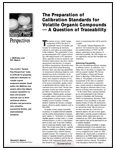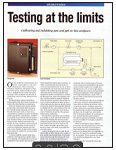KIN-TEK Company Articles
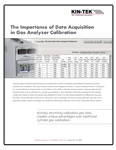 “The Importance of Data Acquisition in Gas Analyzer Calibration”
“The Importance of Data Acquisition in Gas Analyzer Calibration”
by Danet M. Vrazel 2025/10
Acquiring data to verify the performance of an instrument is vital for traceability and analysis of trends for accuracy, reliability and compliance. Most gas analytical devices have integrated software to capture analytical data for comparison to a saved calibration. However, there are limitations in the ability to directly compare analyzer response data and gas standard values during calibration if a cylinder gas standard is used. Calibration information provided for the cylinder is static and…. Click for more…
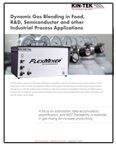 “Dynamic Gas Blending in Food, R&D, Semiconductor and other Industrial Process Applications”
“Dynamic Gas Blending in Food, R&D, Semiconductor and other Industrial Process Applications”
by Danet M. Vrazel 2025/05
The food industry, research and development laboratories, semiconductor, and many industrial processes use gas mixtures to provide the right ratios of gas sources for their applications. Mixing or diluting gases is typically done by accurately measuring and controlling each gas source so that the resulting output is achieved at a high level of precision and repeatability. While there are different ways to mix gases, KIN-TEK Analytical, Inc. has …. Click for more…
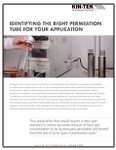 “Identifying the Right Permeation Tube for Your Application” by Danet M. Vrazel 2024/12
“Identifying the Right Permeation Tube for Your Application” by Danet M. Vrazel 2024/12
Permeation tubes have been used for many years in various applications for creating trace concentration gas standards for calibrating gas analytical devices such as a gas chromatograph. Permeation tubes create NIST traceable gas standards because they are held at a stable temperature and are certified via gravimetric weight loss method where both the temperature and weight loss are measured by fundamental traceable standards (4). Creating NIST traceable gas standards for calibration is not the only use for these highly underrated small devices, it just may be the most likely use for them. Permeation tubes can be used for more than routine calibration of gas analytical devices and understanding how they work, and …. Click for more…
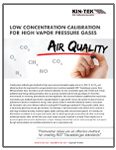 “Low Concentration Calibration for High Vapor Pressure Gases” by Danet M. Vrazel 2024/08
“Low Concentration Calibration for High Vapor Pressure Gases” by Danet M. Vrazel 2024/08
Calibration challenges solved with permeation tube technology. Creating trace calibration gas standards for high vapor pressure atmospheric gases such as O2, NO, CO, N2, CH4, and others has driven the requirement for using permeation tubes to achieve repeatable NIST Traceable gas sources. Since 1966, permeation tubes have been a proven method of calibration for trace concentration gases after O’Keefe, and Ortman published early findings relating permeation tubes as a primary standard used for trace gas analysis (7). Since then, environmental, air monitoring, petrochemical, and other applications have improved detection capabilities that require lower concentration gas standards beyond what is typically feasible… Click for more…
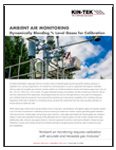 “Ambient Air Monitoring” by Danet M. Vrazel 2023/02
“Ambient Air Monitoring” by Danet M. Vrazel 2023/02
Dynamically Blending % Level Gases for Calibration. A broad concentration range gas mixture or precise mixture of specific gases can be required for testing, exposure, or calibration for a variety of applications. An ambient air monitoring station is such an application that requires calibration with accurate and traceable gas mixtures. Outside ambient air monitoring stations monitor and measure gases such as N2, O2, NO2, CO, CO2, VOCs, SO2, H2S or others. The gases detected, the gas concentration, and the monitoring or detection device drive the requirement of the application… Click for more…
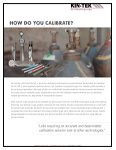 “How Do You Calibrate” by Danet M. Vrazel revised 2025/02
“How Do You Calibrate” by Danet M. Vrazel revised 2025/02
Labs requiring an accurate and dependable calibration solution look to other technologies”. Any refinery control lab, R&D lab, or gas sensor development lab requires accurate calibration gas standards for calibrating GC, GC-MS, or other analytical or detection devices. Gas Cylinders are typically thought of for calibrating instrumentation in lab and process applications. While gas cylinders are certified NIST traceable standards, they have inherent characteristics that create unknown calibration issues. Complications arise when the calibration requires extremely low concentrations, complex gas mixtures, or a large variety of compounds are required. Click for more…
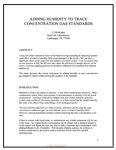 “Adding Humidity to Trace Concentration Gas Standards” by J J McKinley
“Adding Humidity to Trace Concentration Gas Standards” by J J McKinley
A key, but often overlooked, factor in the behavior of gas sampling & measuring systems is the effect of relative humidity (RH) on performance of the system. RH can have a significant effect on the sensitivity and stability of a sensor system. Even for sensors that are not sensitive to RH, the RH level may affect the efficiency of sample delivery to the sensor. Systems sampling ambient air should be calibrated with standards that simulate ambient air. This paper discusses the various techniques for adding humidity to trace concentration gas standards without compromising the accuracy of the standard… Click for more…
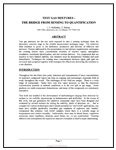 “Test Gas Mixtures – The Bridge from Sensing to Quantification” by J J McKinley, T. Shirley 2012/04
“Test Gas Mixtures – The Bridge from Sensing to Quantification” by J J McKinley, T. Shirley 2012/04
Poster Presentation, Trace Explosives Detection Workshop, Boston, MA, April 2012. Test gas mixtures are the key tools required to take a sensing technique from the laboratory curiosity stage to the reliable measurement technique stage. Yet relatively little attention is given to the definition, production and delivery of effective test mixtures. Factors addressed in this presentation are test mixture requirements, techniques for creating known trace concentration mixtures of reactive vapors, atmosphere simulation, interferent identification, and test mixture delivery… Click for more…
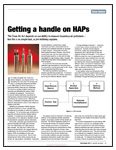 “Getting a handle on HAP’s” by J J McKinley
“Getting a handle on HAP’s” by J J McKinley
The Clean Air Act depends on our ability to measure hazardous air pollutants – but this is no simple task, as Jim McKinley explains. It is widely accepted that “what you cannot measure, you cannot control.” For controlling the more that 170 compounds plus 17 compound categories identified in the 1990 Clean Air Act as hazardous air pollutants (HAPs), there are two challenges. The first is to develop reliable methods for sampling and detecting the various HAPs in industrial atmospheres… Click for more…
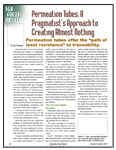 “Permeation Tubes: A Pragmatist’s Approach to Creating Almost Nothing” by Jim McKinley 2007
“Permeation Tubes: A Pragmatist’s Approach to Creating Almost Nothing” by Jim McKinley 2007
Permeation tubes offer the “path of least resistance” to traceability. The production of trace concentration calibration gas mixtures is a challenging process that faces increasing requirements, especially for the calibration of newer, sophisticated analytical instruments. The permeation tube is a molecular-based flow control device that is ideally suited for that purpose. While lower and lower concentrations of an increasing number of complex compounds are required, confinement as stable, static mixtures remains a problem for trace concentration mixtures. Click for more…
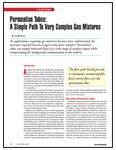 “Permeation Tubes: A Simple Path to Very Complex Gas Mixtures” by Jim McKinley 2008/Jan/Feb
“Permeation Tubes: A Simple Path to Very Complex Gas Mixtures” by Jim McKinley 2008/Jan/Feb
As applications requiring gas mixtures become more sophisticated, the mixtures required become progressively more complex. Permeation tubes can supply miniscule flows of a wide range of analyte vapors while compensating for background contamination in the matrix. Acomplex gas mixture may contain a few or many com- ponents; however, there is typically another factor that makes the mixture difficult to prepare and impractical (and often impossible) to store. For example, the require- ment that a mixture be delivered at a specific relative humidity (RH) moves any mixture into the “complex” cat- egory. The RH value is a function of both temperature and pressure, so storage of the humidified mixture is out of the question…Click for more…
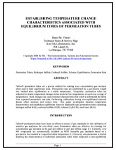 “Establishing Temperature Change Characteristics Associated with Equilibrium Times
“Establishing Temperature Change Characteristics Associated with Equilibrium Times
of Permeation Tubes” by Danet M. Vrazel
Teflon® permeation tubes are a proven method for making trace concentration gas mixtures when used in their equilibrium state. Permeation rates are established by a gravimetric weight loss method after equilibration at a stable temperature. Frequently, permeation tubes are subjected to drastic temperature changes when stored at low temperatures or used over a range of temperatures. Such changes can cause transient characteristics that result in substantial deviation from expected permeation rate data. Performing calibrations during non-equilibrated transient phases affect analyses and wastes time… Click for more…
 “Calibration for Trace Sulfur in Olefins” 2003 September
“Calibration for Trace Sulfur in Olefins” 2003 September
Maintaining reliable standards for tree sulfur compounds in an olefin matrix is a common problem in industrial quality assurance. Using permeations uses to dynamically blend the required mixtures offers a simple solution. Measurement of trace sulfur compounds is required throughout industry. In the manufacture of polyethylene and polypropylene, for example, even low ppm concentrations of some sulfur compounds will poison the catalyst, affecting yield and product quality. Because some compounds are more troublesome than others, speciation is required. Click for more…
“The Preparation of Calibration Standards for Volatile Organic Compounds – A Question of Traceability”
by J. McKinley and R.E. Majors
The analysis of trace volatile organic compounds (VOC’s) has been of considerable interest for decades, particularly for monitoring air emissions, ambient air, and indoor air contamination int he workplace. The combustion of new gas chromatography (GC) column technology with improvements in GC Instrumentation, especially in detector sensitivity and selectivity improvements. has led to routine measurement and detection of sub-parts-per-billion concentrations. Researchers have directed much effort toward decreasing detection limits and achieving repeatability. Click for more…
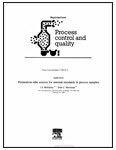 “Permeation tube sources for internal standards in process samples” by J.J. McKinley, Dale C. Merriman
“Permeation tube sources for internal standards in process samples” by J.J. McKinley, Dale C. Merriman
In-process analytical instrumentation is becoming increasingly important for process control and product quality measurement in a production environment in many industries, including the following: petroleum, petrochemical, chemical, pharmaceutical, food and biotechnology. The journal provides a multidisciplinary forum for scientists and engineers involved in research, plant design, process quality control and environmental monitoring. Chemists, chemical/mechanical/electrical and instrument engineers, computer scientists, quality assurance engineers, instrument manufacturers and consultants form the primary audience… Click for more…
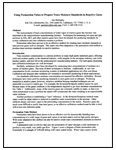 “Using Permeation Tubes to Prepare Trace Moisture Standards in Reactive Gases” by Jim McKinley
“Using Permeation Tubes to Prepare Trace Moisture Standards in Reactive Gases” by Jim McKinley
The measurement of trace concentrations of water vapor in reactive gases has become very important in the semiconductor manufacturing industry. Techniques for measuring low ppm and ppm moisture in NH3, Hal, and other reactive gases have been developed, but producing standards for a system calibration and data validation remains a problem. Click for more…
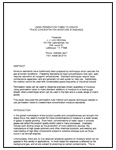 “Using Permeation Tubes to Create Trace concentration Moisture Standards” by J.J. McKinley
“Using Permeation Tubes to Create Trace concentration Moisture Standards” by J.J. McKinley
Moisture standards have traditionally been prepared by techniques which saturate the gas at known conditions. Preparing standards at trace concentrations (low ppm, ppm) requires saturation at cryogenic temperatures. Standard techniques require large cumbersome apparatus, and are generally not well suited for field use. Additionally the method cannot be used with condensable gases frequently of industrial interest. Click for more…
“Testing at the limits” by Jim McKinley
Calibrating and validating ppm and ppm on-line analysers. On-line analytical measurements have become commonplace in the petrochemical and other processing industries. Opertors rely heavily on this up-to-the-minute analytical data for guidance in making the day-to-day operating decisions. Often, analyses are actually in closed loop control of some portions of the process. Click for more…
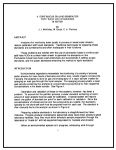 “A Continuous On-Line Generator for Trace VOC Standards in Water” by J.J. McKinley, M.Quazi, C.A. Thomas
“A Continuous On-Line Generator for Trace VOC Standards in Water” by J.J. McKinley, M.Quazi, C.A. ThomasAnalyzers for monitoring water quality in process or waste water streams require calibration with liquid standards. Traditional techniques for preparing these standards are cumbersome and often inadequate in their functions. These problems are rectified with the use of permeation tubes to continuously add trace VOCs to a clean water stream to generate the standards on line… Click for more…
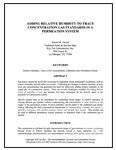 “Adding Relative Humidity to Trace Concentration Gas Standards in a Permeation System” by Danet M. Vrazel
“Adding Relative Humidity to Trace Concentration Gas Standards in a Permeation System” by Danet M. Vrazel
Gas sensor sensitivity levels have increased in equipment where atmospheric conditions, such as relative humidity, directly affect test results. Calibrating for changes in relative humidity in trace level gas concentrations has generated the need for effectively adding relative humidity to the output gas of a permeation system. Click for more…
